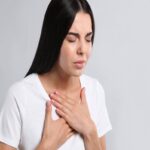
The human lungs are two spongy, airy organs located on each side of the chest-thorax-behind the rib cage. They are essential for respiration, which is the process of supplying the body with oxygen and removing carbon dioxide from it.
The very fact that most of us take breathing for granted proves the lungs never stop their work, securing oxygen for every cell in the body. The following post outlines the anatomy, physiology, diseases affecting the organ, and tremendous intricacy of human lungs.
Table of Contents
The Vital Role of Lungs
The lungs are magnificent organs with a rather important function in our general health and well-being. They provide oxygen to us and remove carbon dioxide through the process of gas exchange. Yet, the lungs can be vulnerable to diseases that critically affect their functions and, individually, our quality of life.
There are numerous types of lung diseases, and they affect different structures in the respiratory system. Airway diseases, such as asthma and COPD, feature inflammation and constriction of the airways, which create difficulties in breathing.
Lung tissue diseases include pulmonary fibrosis and sarcoidosis, among others, which are characterized by scarring and rigidity of lung tissue; as a result, lung tissue cannot expand and contract with efficiency. Diseases of lung circulation, like pulmonary hypertension, are characterized by pathological changes in the vessels of the lungs, resulting in high blood pressure and reduced oxygen absorption from the lungs.
The symptoms of lung disease range from the conditions themselves, but common symptoms include chronic cough, shortness of breath, wheezing, chest pain, and coughing up blood or sputum. It is prudent to watch out for these symptoms since they are early warning signs of a more serious underlying condition.

Causes of lung disease are due to many factors, but mostly, smoking is the main cause of many respiratory diseases. Lung disease may be caused by exposure to air pollution, chemicals, and other occupational hazards. Few lung diseases have an infectious etiology, such as pneumonia and influenza; the rest of them, for example, lung cancers, have genetic predispositions.
Treatment for lung diseases depends on the nature and actual complaint of the disease. Symptoms can be improved by not indulging in smoking and avoiding triggers, among other lifestyle changes. The drugs generally prescribed are bronchodilators and corticosteroids, which open the airways and reduce inflammation, respectively. The moment the condition turns grave, oxygen therapy, transplantation of lungs, or other surgeries depending on the nature of the disease is considered.
Anatomy and Structure of the Lungs

Each lung is further subdivided into lobes: three in the right lung, and two in the left. The right lung is slightly larger to make room for the heart, which sits slightly to the left of the center and thus takes up more room on that side. The pleura is a double-layer membrane covering the lungs, further protected by the rib cage. The outer layer is attached to the chest wall, known as the parietal pleura, while the inner layer is attached to the lung called the visceral pleura. Between the two layers is a small amount of fluid, the pleural fluid, serving as a lubricant. This makes the lungs expand and recoil smoothly during breathing.
The lungs are soft, pink, and elastic themselves. Its texture is spongy because of the alveoli, the small air sacs where oxygen and carbon dioxide exchange. There are close to 300 million alveoli in the lungs, therefore giving a very big surface area for gas exchange. This is equivalent in size to a tennis court. The alveoli have exceedingly thin walls, which permit the exchange of oxygen from inhaled air into the surrounding capillaries-thin blood vessels-and also allow carbon dioxide from the blood to diffuse into the alveoli and be exhaled.
How the Lungs Work
Breathing is a mechanical process initiated by the diaphragm, a dome-shaped muscle located below the lungs. Upon contraction of the diaphragm, this dome flattens and moves further down, relieving more space within the chest cavity. At the same time, intercostal muscles, or the muscles between the ribs begin to contract, lifting the rib cage upward. That will be just enough to create a vacuum that pulls air into the lungs, the so-called inhalation.

The respiratory passage is a maze of branching tubes serving as the passageway for air as it moves into and out of the lungs. Air moves through the nose or mouth into the pharynx or throat, and through the trachea, or windpipe, into the body. Air enters into two bronchi through the trachea-one for each lung. Each further divides into more and more smaller bronchioles that connect to the alveoli.
With thin walls, oxygen diffuses into the surrounding capillaries of the alveoli. These molecules of oxygen then diffuse into the red blood cells where they bind to a protein called hemoglobin, which carries them to other parts of the body. Meanwhile, the waste product of cellular respiration, carbon dioxide, diffuses from the blood and into the alveoli to be exhaled.
Gas Exchange: The Core of Lung Function
That would provide the process of gas exchange within the organ for life in the lungs. Oxygen is highly needed because it is utilized within cellular respiration, where energy is produced within the cells; otherwise, it would lead to death amongst body cells and also eventually to the failure of vital organs. The produced carbon dioxide as a by-product must also be removed since its build-up within the body is toxic.
This movement of the gases is possible through a process called the tendency of molecules to diffuse from an area where their concentration is higher into an area where their concentration is lower. Because oxygen has a greater partial pressure in the air we breathe compared with the blood in our lungs, it diffuses into the blood. Conversely, the partial pressure of CO2 is greater in the blood than it is in inhaled air. Thus, it is the diffusion of the CO2 from the blood into the alveoli to be exhaled.
Lung Health and Common Diseases
Care of the lungs is integral to life itself. The lungs, however, are susceptible to a host of diseases, many of which have been linked to environmental factors such as pollution, cigarette smoking, and the inhalation of noxious materials.

1-COPD (Chronic Obstructive Pulmonary Disease)- is a group of lung diseases that includes chronic bronchitis and emphysema; it is symptomatized by long-term breathing difficulties and poor airflow. The leading cause of COPD is smoking, but in some cases, long exposure to pollutants can also contribute to this disease. Symptoms involve the inflammation and narrowing of the airways and loss of lung elasticity, which raise one’s difficulty in breathing.
2-Asthma – is generally a chronic disease of inflammation or narrowing of the airways, which may be in response to allergens, exercise, or cold air. Episodes of wheezing, breathlessness, and chest tightness are common symptoms. Treatment: Though asthma cannot be cured, it generally can be brought under good medical control.
3-Pneumonia– Pneumonia is an infection that inflames the air sacs in one’s lungs, which may be filled with fluid or pus. It results from bacteria, viruses, and fungi. The usual victims are the victims who have problems in their defense systems, elderly persons, and victims suffering from chronic conditions. The symptoms entail cough, fever, and difficulty in breathing.
4-Lung Cancer- Lung Cancer-lung cancer is one of the most common and dangerous types of cancer in the entire world. The major risk factor is smoking; however, one need not be a smoker to acquire lung cancer. This may sometimes be due to air pollution or sometimes because of inhalation of harmful chemicals. Symptoms include chronic cough, chest pain, weight loss, and coughing of blood.
5-Pulmonary Fibrosis- This is characterized by scarring and stiffening of the lung tissue, thereby making the lung tissues incapable of functioning properly. It may be caused by long-term inhalation of harmful materials, such as asbestos; an autoimmune disease; and sometimes for no known reason, thus idiopathic pulmonary fibrosis. Those suffering from this usually experience symptoms like shortness of breath and fatigue.
Smok’s Affect on the Lungs
Smoking is responsible for the highest number of preventable cases of lung disease worldwide. The injurious chemicals inside tobacco smoke damage airways and alveoli. It causes impairment in lung function, which can result in susceptibility to infections and diseases such as COPD or lung cancer. Secondhand smoke will result in damage, especially to children and nonsmokers.
Luckily, cessation of smoking can significantly clear lung health. The lung is capable of remarkable healing that starts soon after a person stops smoking, although long-term smoking can cause irreversible damage. Lung cancer and other diseases become less risky over time; lung function slowly starts to improve.

Keeping Lungs Healthy
Since the lungs form a major part of the human body, special care must be taken to maintain their health:
Avoid Smoking: The most valuable step you can take for your lungs is to avoid smoking or give it up if you are into it.
Regular Exercise: In exercise, physical activities reinforce lung function by increasing the oxygen and carbon dioxide exchange.
Keep Yourself Safe from Pollution: Avoid exposure when pollution levels are high in the air by staying indoors. Also avoid inhaling dangerous fumes from cleaning products, chemicals, and other hazardous things.
Immunize Yourself: Vaccination against flu and pneumonia-a very dangerous lung disease that is most threatening to elderly persons or those whose immune system might be a little weak- is easily preventable.
Deep Breathing Exercises: This can help in the development of the diaphragm and thereby enhance the lung capacity of an individual as a whole.
Conclusion
The human lungs are a remarkable pair of organs quiet and indefatigable workers in their quest to grant our bodies all the oxygen they need for their functions. They are also vulnerable to many disorders and perils from the ambient environment.
Understanding how the lungs work, and taking steps to protect them, will go a long way in assuring this vital organ of ours continues to do its job well throughout our lifetime. We are all far more concerned about lung health-be it nonsmoking, lots of physical activity, or steering clear of those pollutants that might interfere with our healthy life.
Disclaimer
In this article, information related to a particular topic has been collected from various sources, the purpose of which, is only to increase the knowledge of the readers and it does not confirm the existence of any disease, particular statement, explanation, appropriateness, congruity, and information or any kind of treatment. Health Alpha does not take any responsibility for any such information.
Views: 2



